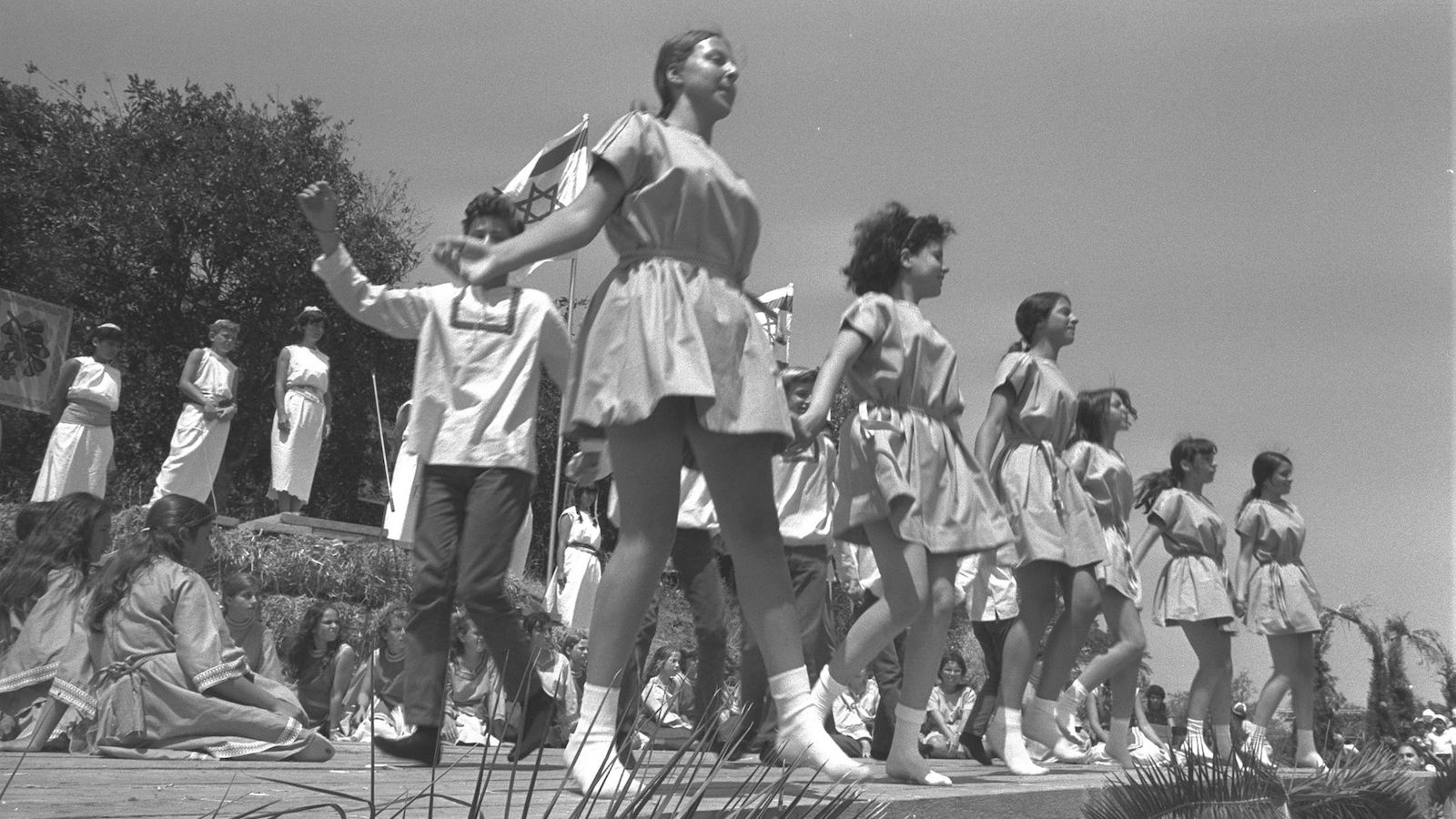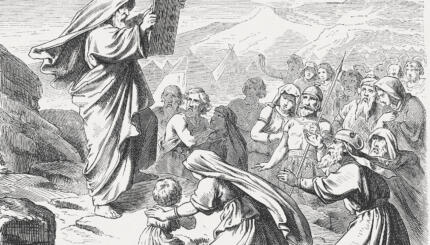The festival of transformed from a purely agricultural into a historical and religious holiday. Originally mentioned in the Torah as a harvest festival, over time it took on new meanings so that now — like the other pilgrimage festivals — Shavuot has an agricultural, historical and religious significance. These meanings contain a number of themes, such as: counting and marking time, a period of sadness leading to a time of explicit joy and the mystical idea of marriage between God and Israel.
Shavuot’s Agricultural Themes
The themes are reflected in the numerous names for the holiday. The agricultural is apparent in “Hag HaKatzir” (Harvest Festival) and “Yom HaBikkurim” (“festival of first fruits“); the marking of time is apparent in “Shavuot” (“festival of weeks”) and “Atzeret,” a name from the Talmudic period meaning a cessation of something or a solemn assembly; the historical and religious is apparent in “Zeman Matan Torateinu,” the time of the gift of .
Shavuot is a festival that marks the end of counting (sefirah) that began on the second evening of Passover. This span of time bridged the barley and wheat harvests when people were supposed to bring offerings of both to theTemple. The agricultural origin of the festival is still remembered and highlighted in the Book of Ruth that is read on Shavuot. The story takes place during the seasonal harvest associated with the holiday. Ruth, a Moabite woman who chose to join her mother-in-law Naomi’s people, is seen as the paradigmatic convert to Judaism. In a sense, she was the first to reject her own ancestral faith and willingly take on Jewish law and tradition. In this way the book reflects both the agricultural as well as the historical significance of the festival.
Receiving the Torah
In post-biblical times, the rabbis calculated that the sixth of the month of Sivan, the day of Shavuot, was the day the Israelites received the Ten Commandments on Mount Sinai. Thus, Shavuot became the festival marking the reception of Torah, when the Israelites had experienced Revelation. Shavuot was consequently transformed into a festival that not only had agricultural significance, but also marked the birthday of the covenant between God and Israel. For traditionalist Jews who believe in “Torah min hashamayim” (direct revelation of God to the Jewish people on Mount Sinai), Shavuot marks a specific historical anniversary. All branches of Judaism view the Torah as a divine gift — whether inspired or revealed. Thus, for every Jewish denomination, Shavuot is a festival that highlights the fundamental truth and importance of the moral law of Torah.

Help us keep Jewish knowledge accessible to millions of people around the world.
Your donation to My Jewish Learning fuels endless journeys of Jewish discovery. With your help, My Jewish Learning can continue to provide nonstop opportunities for learning, connection and growth.
Jewish mysticism has also influenced Shavuot. For mystics, God is like a groom and Israel is like a bride. Shavuot then becomes the anniversary of the marriage between God and Israel. Other mystical parallels are made. Marking the material wheat harvest on Shavuot, the people were to bring two loaves of bread as an offering in the Temple. This mirrored the spiritual “harvest” of Shavuot, the two tablets of the Law. The counting or “sefirah” (the 7X 7 weeks of the omer) also has mystical implications. The number seven equals the days of creation. The word “sefirah” is also the word for each of the levels of divine emanation in Jewish mysticism. Of the 10 levels, the lower seven are believed to be within human apprehension.
Mourning Rabbi Akiva’s Students During the Omer
During the second century, the omer period leading up to Shavuot changed from a time of happiness of anticipation of the harvest, to one of sadness. There are a number of reasons given for this. The one most frequently mentioned is the legendary plague that purportedly killed 12,000 of Rabbi Akiva‘s students. However, other theories posit that once Shavuot was recognized as the anniversary of Revelation, the period leading up to it necessarily became one of apprehension and trepidation.
Another interesting theory relates the apprehension to the agricultural harvest itself. The omer period was when fruit ripened, and thus the fate of the season’s crops was determined. Indeed the views Shavuot as the day when the world is judged regarding the fruit of the trees. There also is a logical historical reason for the fact the omer period became a time of sadness. After the Temple was destroyed in the first century C.E., the people could no longer bring their offerings. Jews would still mark the time, however. The time was now sad because of the need to commemorate the festival “l’zekher lamikdash” (in memory of the Temple) rather than at the Temple itself.
Shavuot is a day of great joy, marking the end of the sadness and commemorating the joy of receiving the Torah.
Consequently, for a few hundred years Shavuot has been the time when young children begin their study of Torah. The joy of Torah learning is often demonstrated physically by giving children candy or allowing them to lick honey off the page being studied.
Pesach
Pronounced: PAY-sakh, also PEH-sakh. Origin: Hebrew, the holiday of Passover.

Help us keep Jewish knowledge accessible to millions of people around the world.
Your donation to My Jewish Learning fuels endless journeys of Jewish discovery. With your help, My Jewish Learning can continue to provide nonstop opportunities for learning, connection and growth.


